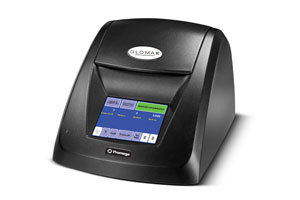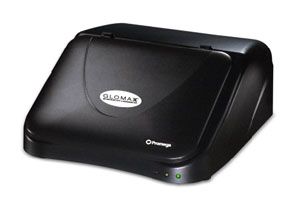应用文献-In vivo RNA interference demonstrates a role for Nrampl in modifying susceptibility to type 1 diabetes
已下载3386次 / 原平皓生物
简介:
In vivo RNA interference demonstrates a role for Nrampl in modifying susceptibility to type 1 diabetes
Stephan Kissler1,5, Patrick Stern1,5, Kazue Takahashi2, Kara Hunter3, Laurence B Peterson4 & Linda S Wicker3
Type 1 diabetes is an autoimmune disease influenced by multiple genetic loci. Although more than 20 insulin-dependent diabetes (Idd) loci have been implicated in the nonobese diabetic (NOD) mouse model1,2, few causal gene variants have been identified3,4. Here we show that RNA interference5,6
(RNAi) can be used to probe candidate genes in this disease model. Slc11a1 encodes a phagosomal ion transporter,Nramp1, that affects resistance to intracellular pathogens and influences antigen presentation7–9. This gene is the strongest candidate among the 42 genes in the Idd5.2 region; a naturally occurring mutation in the protective Idd5.2 haplotype results in loss of function of the Nramp1 protein10. Using lentiviral transgenesis11, we generated NOD mice in which Slc11a1 is silenced by RNAi. Silencing reduced the frequency of type 1 diabetes, mimicking the protective Idd5.2 region. Our results demonstrate a role for Slc11a1 in modifying susceptibility to type 1 diabetes and illustrate that RNAi can be used to study causal genes in a mammalian model organism.
Stephan Kissler1,5, Patrick Stern1,5, Kazue Takahashi2, Kara Hunter3, Laurence B Peterson4 & Linda S Wicker3
Type 1 diabetes is an autoimmune disease influenced by multiple genetic loci. Although more than 20 insulin-dependent diabetes (Idd) loci have been implicated in the nonobese diabetic (NOD) mouse model1,2, few causal gene variants have been identified3,4. Here we show that RNA interference5,6
(RNAi) can be used to probe candidate genes in this disease model. Slc11a1 encodes a phagosomal ion transporter,Nramp1, that affects resistance to intracellular pathogens and influences antigen presentation7–9. This gene is the strongest candidate among the 42 genes in the Idd5.2 region; a naturally occurring mutation in the protective Idd5.2 haplotype results in loss of function of the Nramp1 protein10. Using lentiviral transgenesis11, we generated NOD mice in which Slc11a1 is silenced by RNAi. Silencing reduced the frequency of type 1 diabetes, mimicking the protective Idd5.2 region. Our results demonstrate a role for Slc11a1 in modifying susceptibility to type 1 diabetes and illustrate that RNAi can be used to study causal genes in a mammalian model organism.


